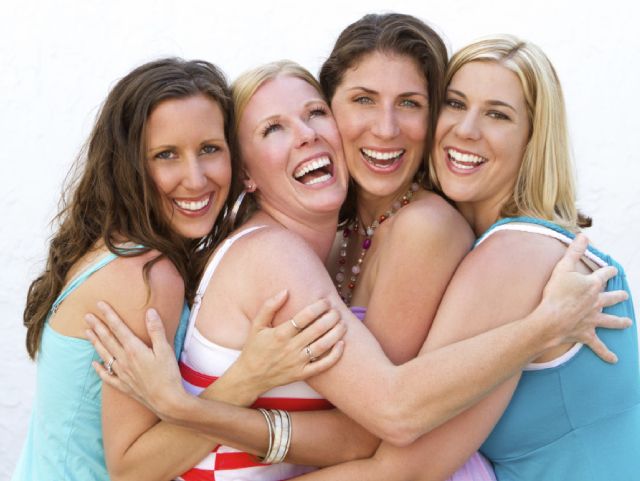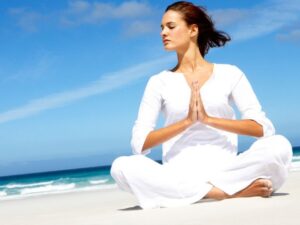For the bright and creative women out there, life really does begin at 40. You’re peaking in your career, the children are grown up, your finances are secure, and you finally have a voice in the world. Do not let your hormones hold you back. As late anthropologist Margaret Mead once said, “There is no more creative force in the world than the menopausal woman with zest”.
In the decade from our mid-40s to mid-50s, women experience a sea-tide of changes taking over their skin and body. Most of these changes are unpleasant and unattractive. You will notice your skin getting dry, your face starting to sag around the jowls and the corners of the lips, your breasts may be sore, and you notice age spots on your skin along with facial hair. Hair gets dry and thin, especially over the top of the head. One tends to gain weight easily, your digestion is poorer, and you feel bloated and gassy. Your libido starts to wane, bad breath and gum problems leave you feeling undesirable, and vaginal dryness can make you uncomfortable during intercourse. Your eyes give away your age, as one tends to develop lines and puffy bags under the eyes. Fine lines and wrinkles appear, and your skin loses its youthful suppleness. Hot flashes can leave you insomniac, reduced bone density can leave you vulnerable to fractures from minor injuries, and loss of bladder control can shatter your confidence. Hormone fluctuations can also leave you irritable and absent-minded, which can affect your personal relations and the quality of your work. Your hormones can also leave your skin more prone to itches and allergies.
What is menopause and peri-menopause, and why does it happen? Peri-menopause is the period in your 40s, when your ovaries start to shut down reproductive function. This mean, your ovaries no longer produce viable eggs, estrogen production is low, and this signals the end of the fertile period in a woman’s life. Your periods now come at longer intervals with irregular flow. This is a natural consequence of ageing, and no woman is immune. Clinically speaking, a woman has reached menopause, if she has not had her period for 12 consecutive months (provided she is not pregnant or nursing, and has an intact uterus). There is no fixed age for this. It can occur at any age from 45 to 55. Some women may reach “early” menopause due to genetic factors, stress, cigarette smoking, illness, surgeries or medications. A woman may have her uterus surgically removed for any number of reasons, which means her periods will cease and she cannot bear a child anymore. But as long as the ovaries are not removed, your body is still producing the estrogen hormone, and one does not experience the symptoms of menopause. However, if a woman’s ovaries are surgically removed as well, then she can be prematurely accelerated into “surgical menopause”, and her skin and body will show all the signs of premature ageing. All women have trace amounts of the male hormone Testosterone in their blood. In younger women, the level of the female hormone Estrogen is far higher in the blood, which suppresses the typical manifestations of the male hormone. But when menopause arrives, estrogen levels start to fall, and in proportion, testosterone levels begin to rise. This is why older women have a more hoarse voice, thinner hair on the scalp, and thicker hair on the face.
What are the other skin changes that occur as we age? It is common to develop little bumps and growths on the skin. Some women develop skin tags on their neck and pits. Some notice bright red, mole-like bumps on their trunk, which are created when tiny blood vessels pop into the skin. Many others note brown flat moles which look like they’re stuck onto the skin. These usually appear on the face and scalp. Dark complexioned women may develop small black warty moles on the face, especially if they run in the family. You may notice blotchy brown patches of pigmentation on your face, along with open pores and tiny broken blood vessels, which leave your skin looking uneven. Women in their 40s and 50s may start having painful acne break outs again, usually around the chin and the jawline. Some women may notice small white spots on their shins, like little pieces of porcelain chips. While these spots may look alarming and are mistaken for Leukoderma, they are usually harmless, and do not grow larger in size. You may note thick bluish swellings on your calves and the back of your thighs. These are varicose veins and they may leave the skin of your legs swollen and itchy. If you are overweight, the skin of your groins may turn red and raw from your thighs rubbing together constantly. If the raw area gets infected, it starts to smell foul. At 60 plus, your skin is very thin and fragile, so one tends to bruise easily.
Who would have thought Estrogen was such a powerful hormone? Falling blood estrogen levels also takes a toll on your body. Estrogen keeps cholesterol levels low, and does not allow blood cells to stick together. This is why heart attacks and heart diseases are less common in young women, compared to men the same age. But after menopause, your cholesterol levels begin to rise, and menopausal women are just as prone to heart disease, as men their age. Estrogen keeps our immune system in check, and our bones strong. It regulates your circulation, your body temperature, your sleep cycles, and maintains muscle tone in the pelvic area.
So how does one cope with all these changes? We cannot cajole our ovaries into producing more estrogen. So how can we replace it from external sources? Some doctors might suggest Hormone Replacement Therapy (HRT). HRT replaces the hormones that your body can no longer produce. These hormones can be taken as pills or injections, or applied onto the skin as creams or patches. The estrogen in this case, is usually derived from the urine of pregnant mares. There are side effects though. HRT users are more prone to strokes and cancer of the breast and uterus. If you have blood relatives who have had breast or uterine cancer, you must inform your doctor before you go on HRT. All recent studies indicate that HRT must be only used to manage severe menopausal symptoms, in the lowest effective dose and only for short periods of time. HRT must never be used to treat just skin and ageing related issues. For vaginal issues, an estrogen cream is preferred over pills. For women suffering from bone thinning, calcium and Vitamin D supplements must be the first treatment of choice. Use non-hormonal medications to treat hot flashes. And combining estrogen with other hormones like progeterone or testosterone, can balance out the side effects.
Are there any natural sources of Estrogen? Herbal and Naturopathy preparations are available over the counter, sometimes as ‘supplements’. But there are no long term studies which prove the safety or effectiveness of these therapies. Logic dictates that if these supplements work like Estrogen, they must have the side-effects of Estrogen as well. So can I take small doses of Estrogen every day in my daily diet? Yes, there are several plant-based sources of natural Estrogen. Hummus, flaxseeds, soy milk, tofu, sesame and sunflower seeds, alfalfa sprouts, yams and dried apricots and prunes contain natural Estrogens called Phytoestrogens. Of course, this does not mean you should eat a pound of hummus every day! In fact, keeping your weight in check can help lessen the severity of many symptoms of menopause. Regular exercise can strengthen your bones and keep your heart and digestion healthy. Use a sunscreen to avoid age spots and minimize wrinkles. You might need heavier and creamier moisturizers containing urea, squalene, petrolatum and/or sodium hyaluronate. Well-moisturized skin looks youthful and is less prone to wrinkling. You must increase the amount of fat in your diet. Yes, you heard me right. But choose the right kind of fats, and stay away from animal fats (including butter). Omega-3 fatty acids from fatty fish (cods, salmons, sardines), olive oil, safflower oil, flaxseed and canola oil, will keep your skin healthy, cholesterol low, and memory sharp. Yoga and meditation can keep stress levels low, keep mood swings in check, and help you sleep better. Use anti-ageing creams with ingredients like Retinol, AHA, Ubiquinone/Coenzyme Q, Antioxidants etc. Ugly moles and growths can be zapped off with laser treatments; so can age spots and unwanted facial hair. Visit your dentist every quarter for a thorough clean-up. Get regular check-ups from your gynecologist, and ask her to teach you how to do a breast self-examination test. It is wise to get mammograms and PAP smears done every 3 years; more often if breast and cervical cancer runs in your family. Use ammonia free hair color, and if you have allergic or sensitive skin, use vegetable based hair dyes. Facial massages and radiofrequency based dermatological treatments can keep your skin tight and toned. A good body massage by a trained chiropractor can help relieve aches and pains.
Acupressure still has a lot of fans. Herbal drinks containing green tea, hibiscus, kava, ginseng or chamomile, have a soothing effect, keep weight in check, and give good sleep. Do your Kegel exercises and use water-based lubricants for a healthy sex-life. And most importantly, preserve your outlook and your sense of humor as you cope with the challenges of menopause!




